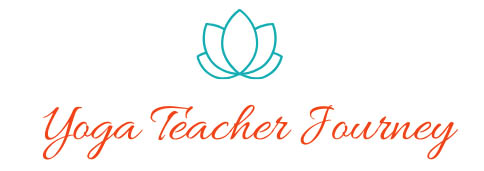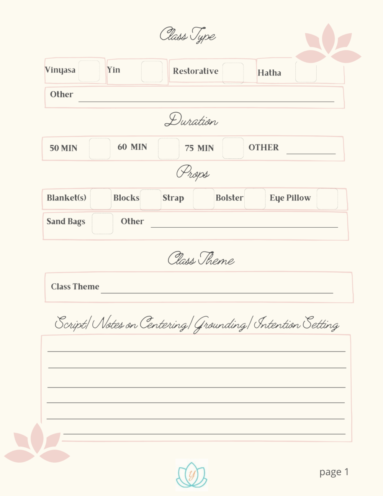As a yoga teacher, what is the most effective way to ground and center students? Do they provide the same benefits? What does it actually mean to ground or center and why do we do it? Keep reading for answers to these questions and more.
“Come to Center”
Take a moment to recall your first ever yoga class. Maybe you attended after a busy day at work – or were living a chaotic, fast-paced lifestyle that many people consider “normal.” Maybe it was the first time you sat in silence and focused on yourself in a very long time – or ever.
The process you were likely guided through taught you how to “come to center.” It may have included elements to ground you – and to bring your awareness inside by closing off the outside world and focusing on your inside world. It taught you how to be present in the moment. It is a profound experience to become aware of your Self. The Bhagavad Gita teaches us that:
“Yoga is the journey of the self, through the self, to the Self.”
The first few moments of that journey in each class are crucial for several reasons:
- Separates the student from the events that occurred prior to arriving on their mat.
- Calms the mind and gives space to the chitta vritti (mind chatter or monkey brain) – the myriad of thoughts bouncing around inside their head.
- Cultivates awareness, establishes mindfulness, and brings the student into the present moment, to the here and now.
- Places them in a mindset of equanimity, conducive to being taught and led through a yoga class.
GROUNDING VS. CENTERING
Is there a difference between “grounding” and “centering?”
Technically, yes.
The process of grounding means connecting with the earth through our physical body, through our subtle bodies, and spiritually. See this definition by Yogapedia.
Centering on the other hand typically refers to quieting the mind, focusing on our breath, and connecting with our true inner self. But there can be physical and subtle body connections taking place here as well.
GROUNDING
In our yoga practice we teach grounding through our feet, legs, and through the root chakra, Muladhara. This is a way to connect to our roots, our foundation, our tribe. Balancing Muladhara brings us at home in our body, to a place of safety and security.
Grounding through the earth also gives us energy. We know that prana (life force) comes from the earth (among other sources). We are born with prana that becomes depleted throughout our life. One way to replenish prana is grounding through the earth. In some forums this is also called “earthing.” Healthline explains “earthing” as a “therapeutic technique that involves doing activities that ‘ground’ or electrically reconnect you to the earth.”
In Ayurveda (yoga’s sister science), prana also comes from the food we eat. Following the cycles of nature and eating seasonal foods can also keep you grounded giving you vital life energy. Read this article for Ayurvedic tips to stay grounded.
HOW TO BEGIN GROUNDING STUDENTS
Grounding students at the beginning of your yoga class can include a body scan cueing them to notice or feel the weight of their feet, legs, and hips. From there, continue working up through the body to the crown of the head.
You can also use visualization and imagery to ground students. One of my favorites is a meditation of sorts where students visualize their thoughts spinning inside their head like a snow globe. On the inhale, the thoughts are spinning around and floating and, on the exhale, they visualize the snow falling and settling down. With each inhale they visualize more space between the snowflakes representing fewer and fewer thoughts.
Another visualization is a mind body connection with the breath. On each inhale they visualize the rising of their chest and on the exhale the students feel and visualize the falling of their chest and the weighing down of their hips, legs, and feet. They may say quietly to themselves, “falling,” on each exhale.
We usually begin our classes in grounding asanas (postures), such as Sukasana (Easy Seat), Balasana (Child’s Pose), or Savasana (Corpse Pose). But remember that even starting in Tadasana (Mountain Pose) can be a grounding posture as students connect to the earth through their feet and legs. See 9 Starting Postures for Your Next Yoga Class.
Even though we may be teaching in an indoor space, using language such as “ground down through your sit bones,” or “root down through your feet,” prompts your students to visualize the earth beneath them. You can even cue them to visualize their legs as tree roots connecting them deep down into the earth.

GUIDING STUDENTS TO FIND THEIR CENTER
Centering students at the beginning of your class can include elements of grounding as well. You may initially guide students through a grounding exercise prior to centering as you invite them to draw their awareness inside.
During the centering segment of your class, cue students to focus on their breath, perhaps taking them through several rounds of pranayama. It is natural to offer students time to set an intention for their class once they are grounded and centered, perhaps after introducing your theme (see How to Theme a Yoga Class).
We often cue students to “come back to center” throughout the class. This can be intended as directional (to return to a neutral position), but it’s important for students to understand what exactly their center is.
As I alluded earlier, physical, and subtle body connections are also related to our center. We teach students to bring their hands to heart center and about the location of the Anahata (heart) chakra (energy center).
When envisioning the center of our body, we are likely to think of our navel – or the Manipura (solar plexus) chakra, located just a few inches above the navel. This is the center of our energetic body. This place gives us our “gut feelings” and when we’re balanced, lets us know when something just feels right or not.
I’d be remiss if I didn’t talk about one more center, our physical center! It’s located deep inside our abdomen. Our physical core¸ our center of gravity, is a couple inches below our navel, in front of the thick lumbar vertebrae.
Ancient yoga tradition believes this area is also THE energy center (or power center), where prana (life force) is stored and regulated in your body.
Breathing correctly with deep diaphragmatic breathing enhances your power center and allows energy to flow correctly.
GROUNDING AND CENTERING IN SAVASANA
Just as important as starting students in the right place, is closing your class with them centered and grounded prior to Savasana. Once students have settled into their final relaxation posture, you may initially choose to bring them to center using pranayama (breath control).
Invite them once again to bring awareness inside, to their breath, and to any sensations they may be feeling. Perhaps cue them to notice how they feel now compared to when they began their practice. Guide them through a body scan. Here you can ground students by encouraging them to notice the places that are touched and supported by the mat, and the earth beneath their body.
Finally, consider offering a closing quote, or words of wisdom of your choice. Here are a two of my favorites when theming a class around “your center.”
“Trust the wisdom of your body; for it often reflects the wisdom of your soul.”
~ Melody Beattie
“At the center of your being, you have the answer; you know who you are, and you know what you want”
~ Lao Tzu
Resources:
https://mapi.com/blogs/articles/four-ayurvedic-tips-to-stay-grounded





